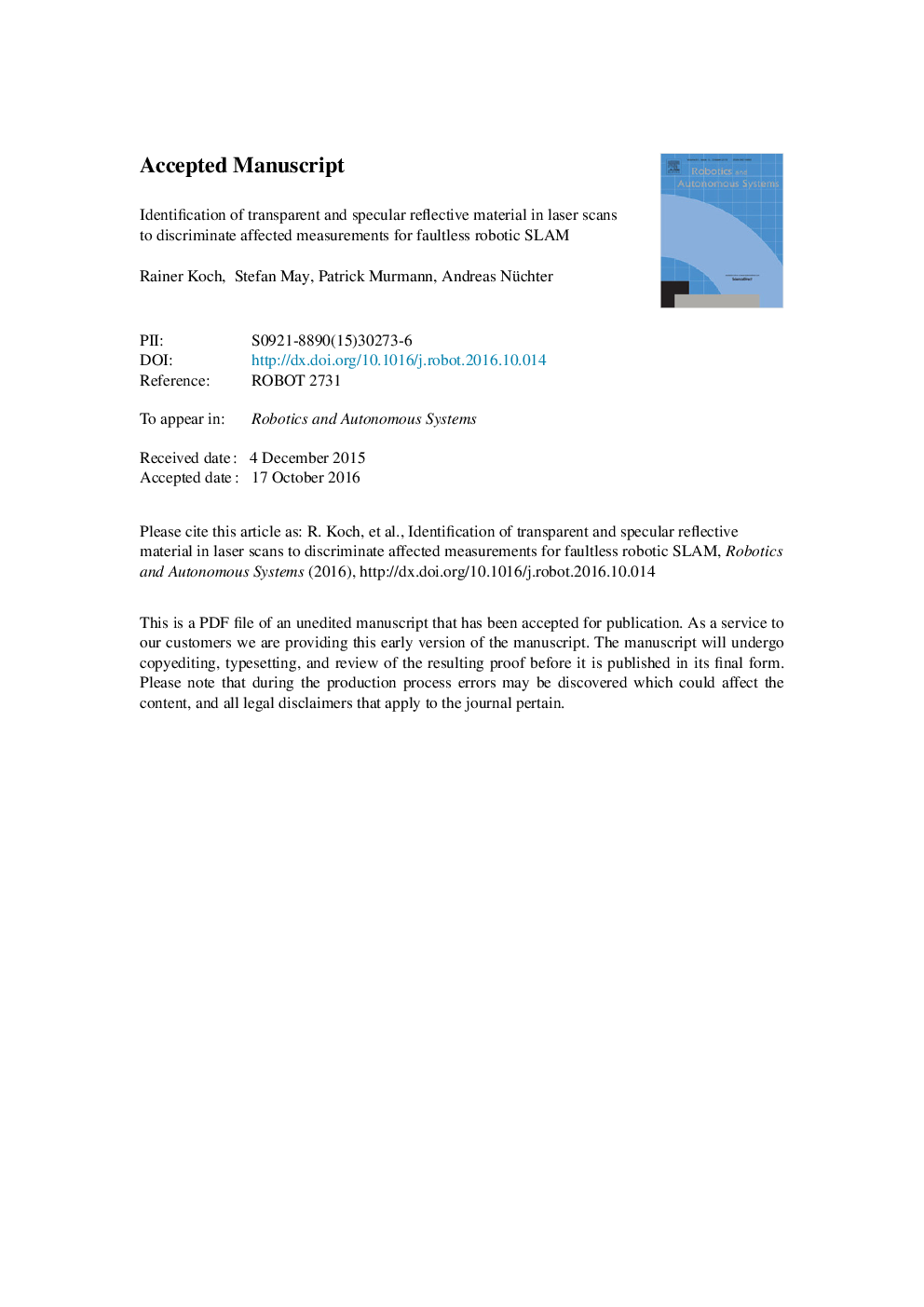| کد مقاله | کد نشریه | سال انتشار | مقاله انگلیسی | نسخه تمام متن |
|---|---|---|---|---|
| 4948848 | 1439855 | 2017 | 63 صفحه PDF | دانلود رایگان |
عنوان انگلیسی مقاله ISI
Identification of transparent and specular reflective material in laser scans to discriminate affected measurements for faultless robotic SLAM
دانلود مقاله + سفارش ترجمه
دانلود مقاله ISI انگلیسی
رایگان برای ایرانیان
موضوعات مرتبط
مهندسی و علوم پایه
مهندسی کامپیوتر
هوش مصنوعی
پیش نمایش صفحه اول مقاله

چکیده انگلیسی
Mapping with laser scanners is the state-of-the-art method applied in service, industrial, medical, and rescue robotics. Although a lot of research has been done, maps still suffer from interferences caused by transparent and specular reflective objects. Glass, mirrors, shiny or translucent surfaces cause erroneous measurements depending on the incident angle of the laser beam. In past experiments the Mirror Detector Approach was implemented to determine such measurements with a multi-echo laser scanner. Recognition values are based on their differences in recorded measurements in regard to the distance of the echoes. This paper describes the research to distinguish between reflective and transparent objects. The implemented Mirror Detector was specifically modified for recognition of said objects for which four experiments were conducted; one experiment to show the map of the original Mirror Detector; two experiments to investigate intensity characteristics based on angle, distance, and material; and one experiment to show an applied discrimination with the extended version of the Mirror Detector, the Reflection Classifier Approach. To verify the results, a comparison with existing models was performed. This study showed that shiny metals, like aluminium, etc., provide significant characteristics, while mirrors are to be characterized by a mixed model of glass and shiny metal. Transparent objects turned out to be challenging because their appearance in the sensor data strongly depends on the background. Nevertheless, these experiments show that discrimination of transparent and reflective materials based on the reflected intensity is possible and feasible.
ناشر
Database: Elsevier - ScienceDirect (ساینس دایرکت)
Journal: Robotics and Autonomous Systems - Volume 87, January 2017, Pages 296-312
Journal: Robotics and Autonomous Systems - Volume 87, January 2017, Pages 296-312
نویسندگان
Rainer Koch, Stefan May, Patrick Murmann, Andreas Nüchter,